Let There Be (Layered) Light
November 14, 2024
Sponsored Content
Text by Maria LaPIana
Illuminating ideas that add depth, texture, and focus to a space
Have you ever walked into a room that instantly felt comfortable? A room that was warm and inviting with a good vibe, a room that lifted your mood? No doubt it was well-designed, but if there was something about it you couldn’t quite put your finger on, it was probably the lighting.
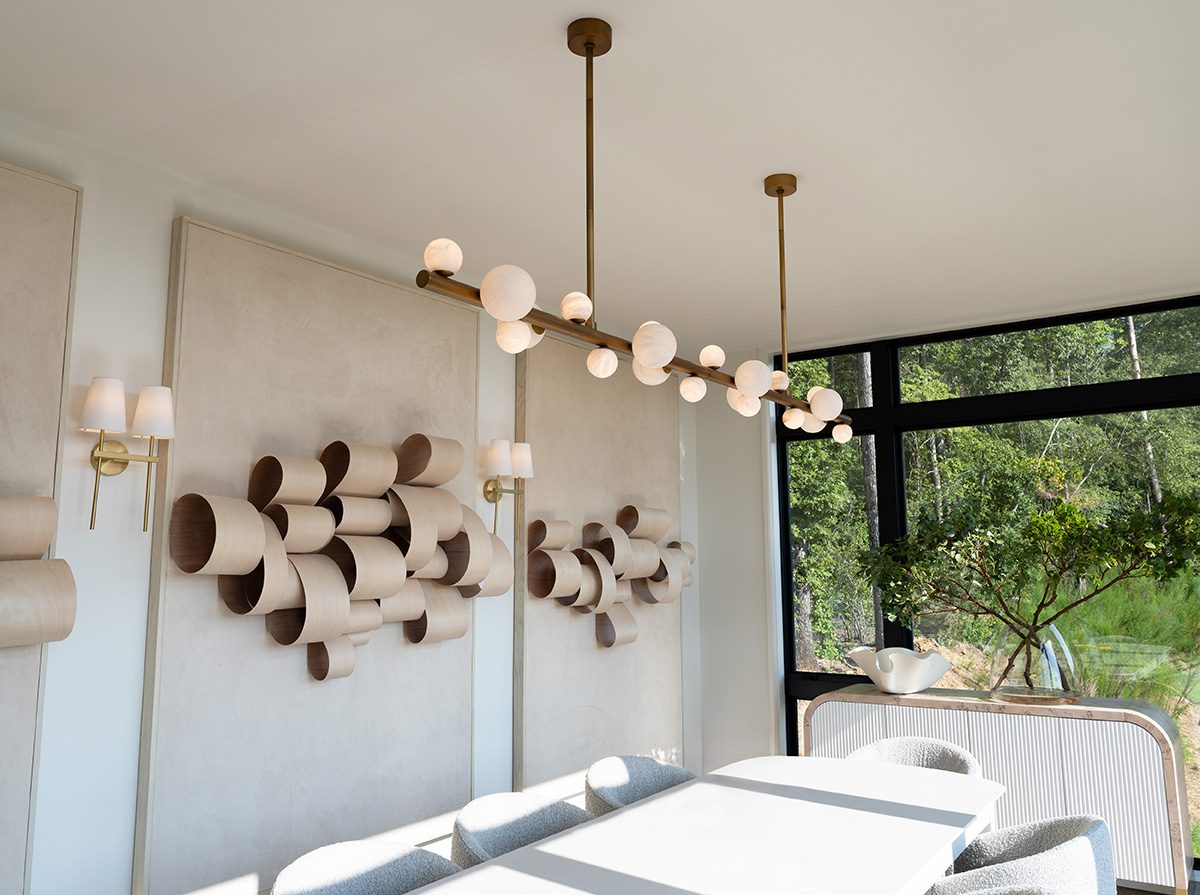
“The impact that lighting has on a room isn’t immediately obvious,” says Carla Zajac, “but it creates a lot of mood. And it’s layering that does that. It isn’t until someone points out there are three lighting sources in a room, all serving a different purpose, that it makes sense.”
Zajac knows lighting. She and her husband, James Slaven, founded Regina Andrew, a multidisciplinary lighting studio headquartered in Detroit. As the company visionary she sees lighting as both an art form and a means to an end: lighting enhances every element of a beautiful functional space. Similarly, poor lighting can have a negative impact on every design decision you make.
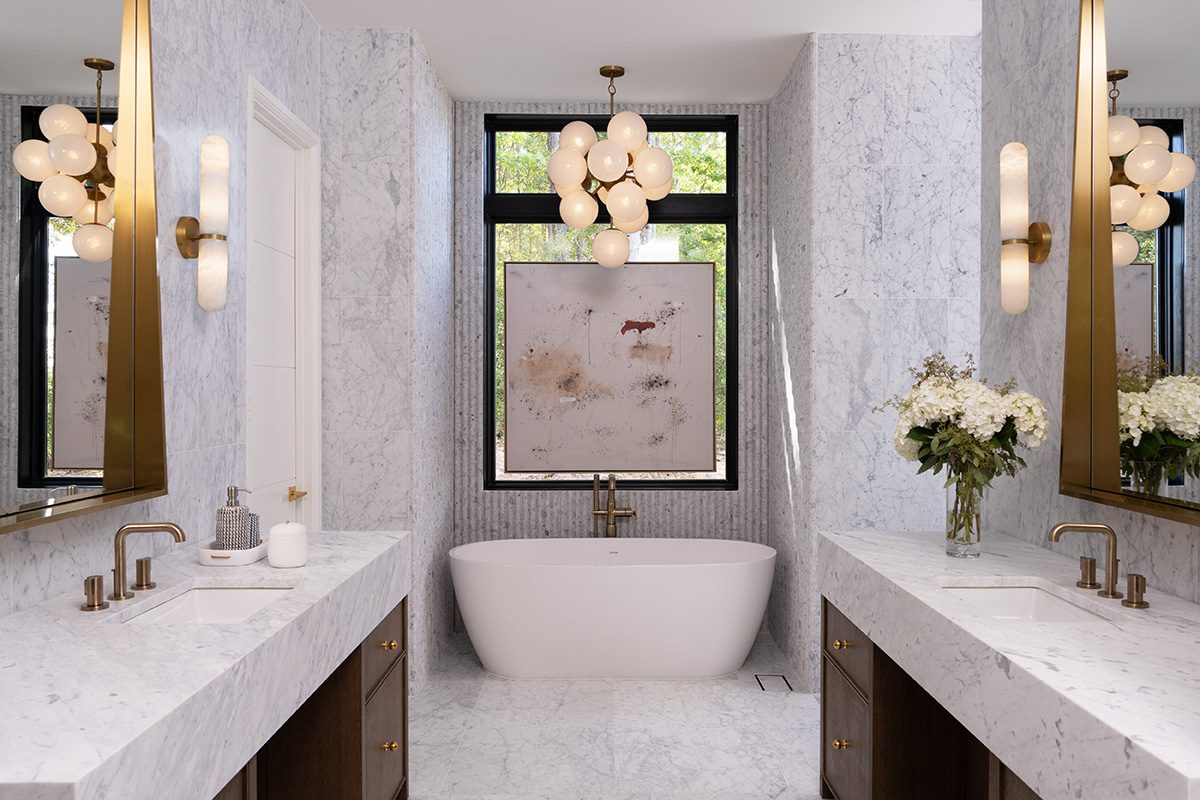
Layering Lighting
A technique that uses multiple light sources to create a balanced space, layered lighting is a thoughtful mix of ambient, task, and accent lighting. Ambient lighting refers to the overall illumination of a room. It can come from a variety of fixtures, including ceiling lights, wall sconces, and floor lamps—as well as natural sources, such as windows and skylights. Task lighting provides brighter and more direct illumination for specific tasks. These may include computer work, reading, arts and crafts, grooming, and food preparation. Floor lamps and table/desk lamps are examples of task lighting. Accent lighting can be used to create a mood, illuminate a shadowy area, improve safety in a dark space, or highlight a feature, such as bookcases or artwork. Sconces or picture lights are good ways to add accent lighting to a space.
There may be a formula to layered lighting, but that doesn’t mean it’s formulaic in practice, says Zajac. A well-lit room has as much to do with aesthetics and craftsmanship as it is does with how many fixtures you have and where they’re placed. It’s why you want to choose fixtures that make a statement as well as add ambience, she says.
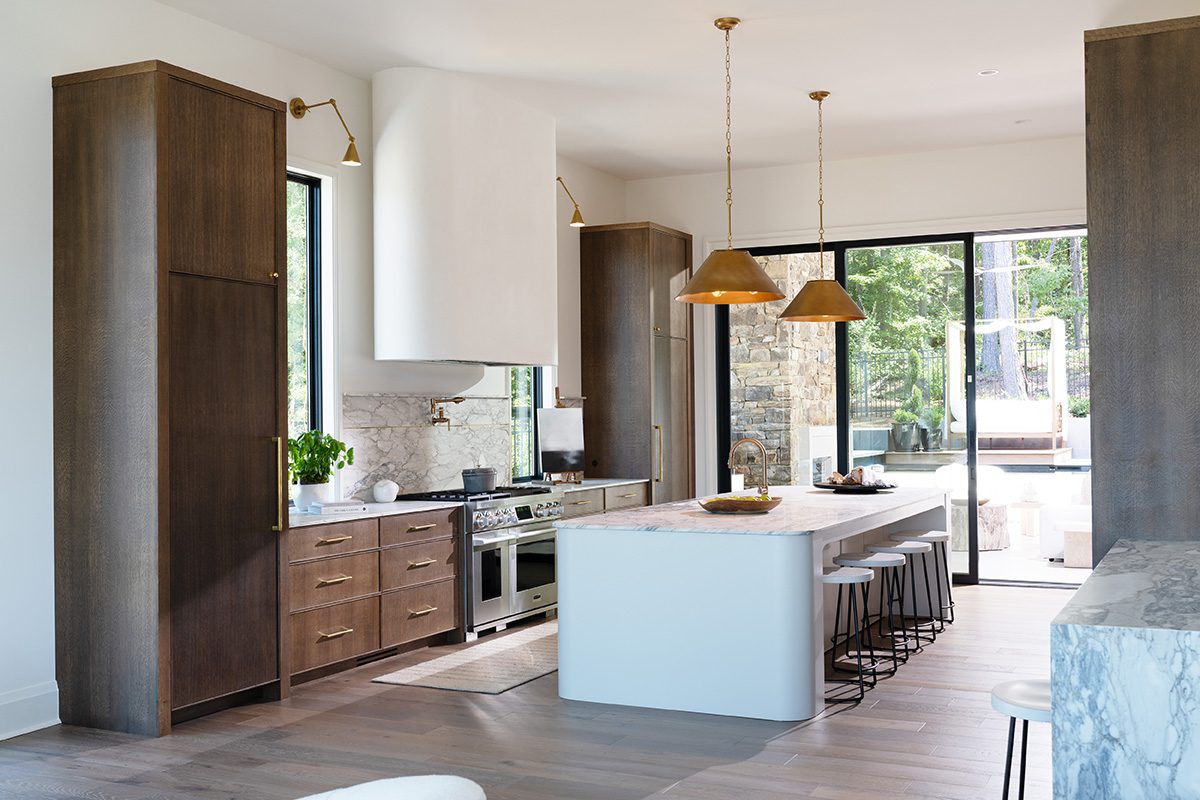
Lighting Design: A Room-by-Room Guide
There’s a layered lighting strategy for every room. A few rules of thumb:
• The living room (aka family room or great room) is the most multifunctional space (think reading, conversing, resting, watching TV—sometimes all at once), so it calls for a combination of overhead fixtures, floor lamps, table lamps, and sconces.
• The kitchen is all about function, but it’s where a lot of gathering happens, too, so consider strong, overhead, ambient lighting plus lots of task lighting for prep areas. Kitchen designers like natural light, so don’t forget to compensate for when the sun goes down.
• The bedroom is a sanctuary and a place for repose, so soft ambient lighting (a ceiling fixture with a dimmer) is a given, but it’s also where you go to read, so be sure to include bedside lamps and/or sconces.
• The bathroom is where you start and end your day, so consider calm ambient lighting (ceiling fixtures, sconces, pendants) and because it’s where you get ready to face the world, bright task lights around the mirror.
• Dining room lighting should add dimension to your table and create a pleasing socializing experience. A chandelier or pendant should be centered directly over the table; a dimmer allows you to adjust for projects, homework, or game night—as well as candlelit dinners.
Remember that accent lighting is a way to emphasize architecture or create visual interest in any room, no matter how it is used.
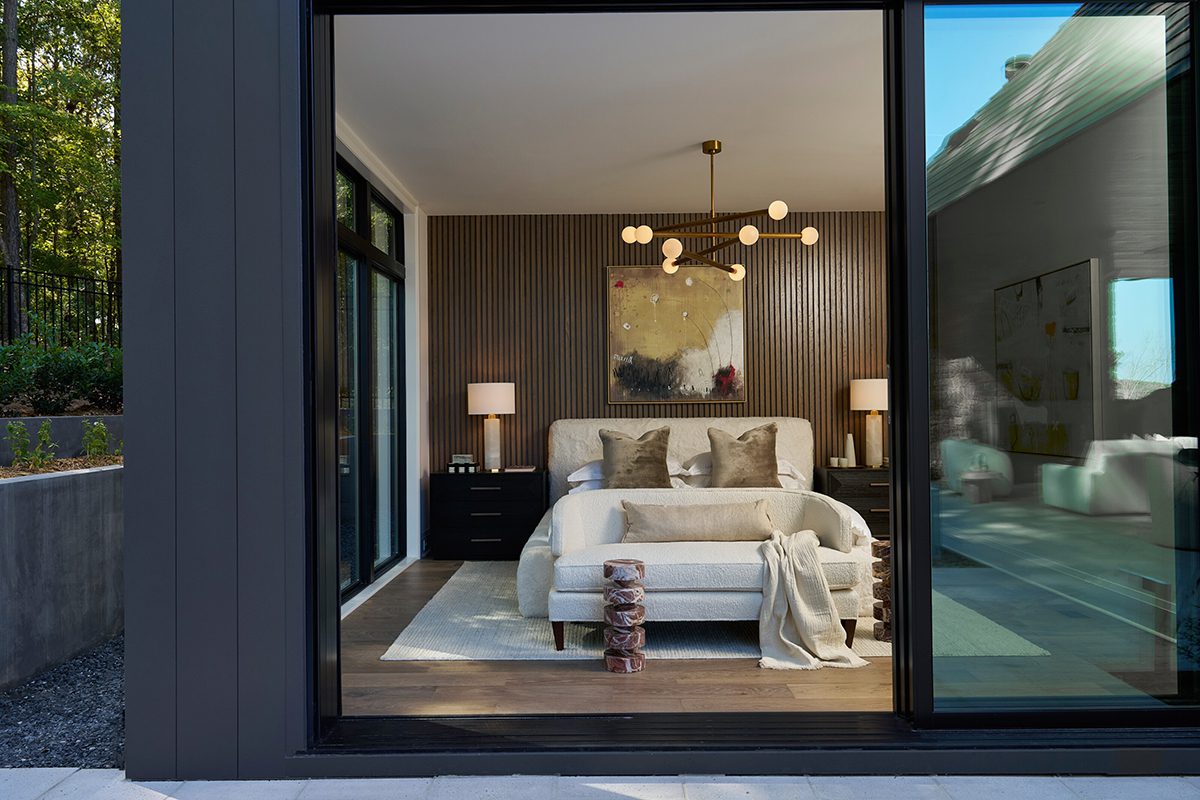
Lighting Design Details
It’s important to balance the placement and number of light sources in any room. Consider room size and furniture scale and anything that may obstruct light, like beams. Ceiling height is important because it may impact light distribution. North-facing rooms generally require more thought—and more lighting.
A lighting designer can help you determine which bulbs are best suited to your fixtures and your space. Different bulb shapes provide different spreads of light and complement different fittings and positions. Some terms to know:
• Lumens: the amount of light the bulb gives off (for LED lights, a brighter light means more lumens).
• Wattage: the amount of power the bulb uses (LED bulbs use fewer watts, hence less energy than incandescent bulbs).
Color temperature matters. This refers to the perceived warmth or coolness of light colors, as measured on the Kelvin scale. Warmer colors like reds, oranges, and yellows have lower Kelvin values and feel cozy, inviting, and energizing. Cooler colors like blues and purples have higher Kelvin values, and are seen as calming, serene, and professional.
Adjustability or dimming may be the best way to get the most out of your layered lighting plan. It allows you to customize and create the right mood whether you’re cooking, working, reading, or just relaxing. It can save energy and lower your energy bill, reduce eye strain, and help you focus on a task at hand.
Layering is only one part of an exceptional lighting plan, according to Zajac. It takes a unique mix of styles, textures, and materials to elevate a space, and that, she says, is what the Regina Andrew brand offers. By implementing the layering technique with a combination of well-designed fixtures, you marry form and function in the best possible way.
Share
![NEH-Logo_Black[1] NEH-Logo_Black[1]](https://b2915716.smushcdn.com/2915716/wp-content/uploads/2022/08/NEH-Logo_Black1-300x162.jpg?lossy=1&strip=1&webp=1)
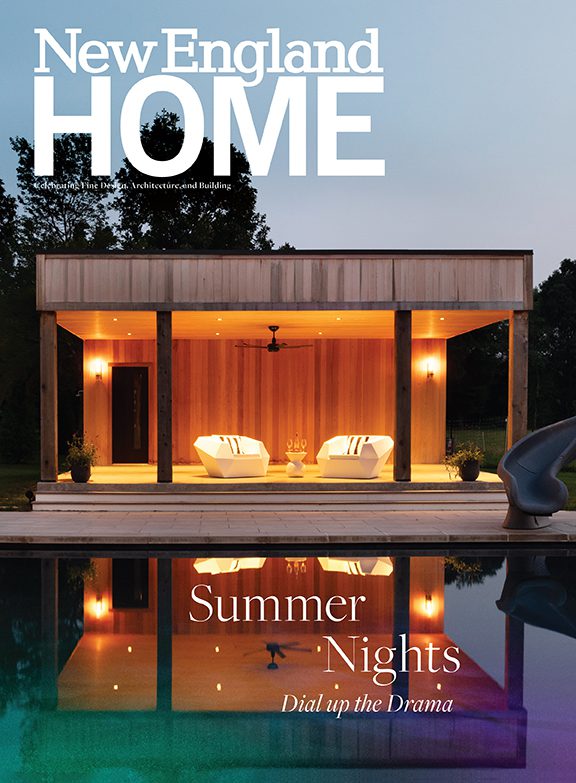




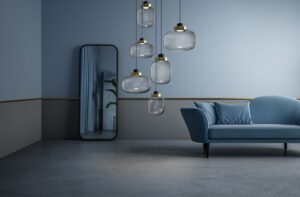
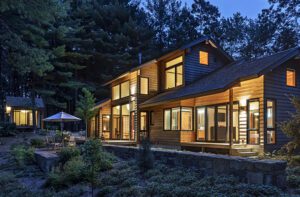
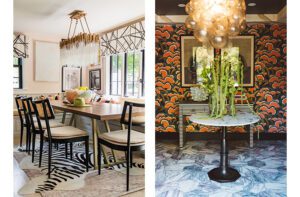
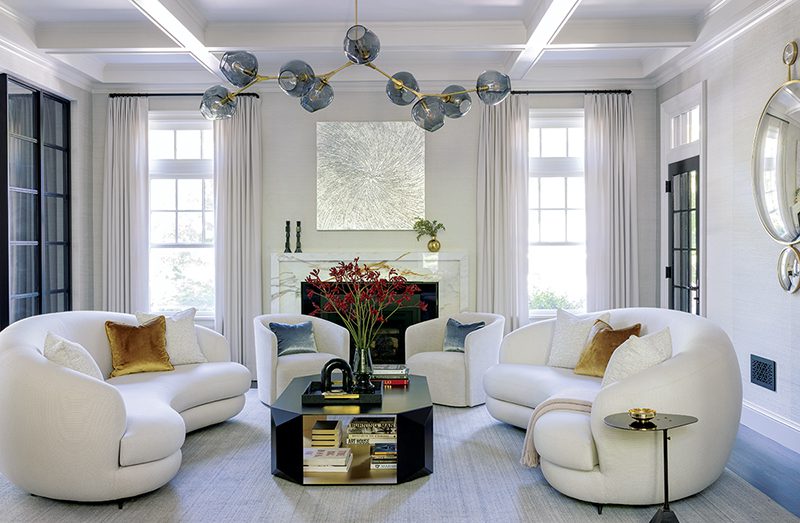
You must be logged in to post a comment.